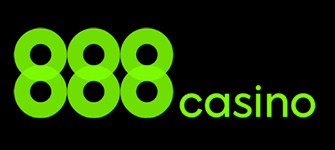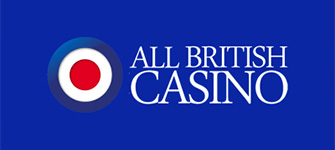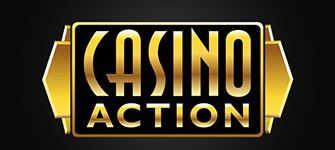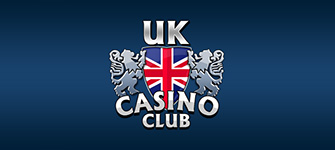Blackjack Rules
Blackjack is currently among the leading casino table games in the world. It draws its popularity from being a simple, straight-forward and intuitive card game that does not require paying much attention (unlike poker). This is, of course, just a generalisation and I do not advise anyone to play blackjack without having learned the basic rules behind this fantastic game first.
The goal of each player is to obtain a hand of a higher total than the dealer without going over 21. At the beginning of each round, both the player and the dealer receive two cards. The player receives their cards face-up while the dealer has one card face-up and one card facing down.
The player then chooses whether or not they want any additional cards based on their hand’s starting total. If a player is dealt two cards adding up to 21 on their original hand, this is called a “blackjack” or a “natural”. It results in a victory for the player (or at least, if the dealer does not have a natural also). In this guide, we are going to discuss some general rules that are inherent to most variations of the game.
- ✓ Deck Rules
- ✓ Table Rules and Etiquette
- ✓ Blackjack Table Limits
- ✓ Player Rules
- ✓ Soft versus Hard Hands
- ✓ Dealer Rules
But let’s dive right into the details without further ado.
Deck Rules
Blackjack is played with standard 52-card decks. Depending on the variation, blackjack can use anywhere between one and eight full decks. There are, of course, the usual four suits – Clubs, Spades, Hearts, and Diamonds, but these are not taken into consideration for the most part. The cards are assigned numerical values, though, which are all that matters here.
An Ace is attached a value either of 1 or 11. The values of cards 2 through 10 coincide with the number of pips on their front. For example, if you have a 2 and an 8 on your starting hand its total will be 10. The face cards like Jacks, Queens, and Kings have a value of 10 so for instance, a Jack and a 5 would result in you having a hand total of 15. The only way you can get a blackjack right away is if you receive an ace and a ten-value card on the initial draw of the coup.
Table Rules and Etiquette
There are a few rules related to table etiquette the player must follow to the point. First of all, a player is prohibited from touching theirs or anyone else’s cards. Only the dealer is allowed to handle cards in shoe games where players’ hands are dealt face-up. In hand-held games where cards are dealt face-down, players should check their cards using one hand only. Removing your cards from a pitch table is strictly prohibited as a precaution against potential card replacement, which, needless to say, is illegal because it changes the odds of the game.
Buying In
You can purchase chips either from the cashier cage before you join a blackjack game or do so directly at the table. Under no circumstances should you hand the money directly to the dealer as this is against casino protocol. You are not allowed to place the bills in a betting circle, either. Betting circles are reserved for chips only.
The proper way to buy in at a blackjack table would be to lay the money down on the felt. The dealer would then collect your bills and exchange them for chips. Never buy in if hands are still in play at the table. Etiquette requires you to take a seat and wait for the dealer to settle winning and losing wagers – only then can you buy in.
Many seasoned players are displeased when someone is slowing down their game. To avoid this, I recommend you to place the exact amount of your buy-in. If there is only one other person at the table playing heads-up against a dealer, the polite thing to do would be to ask them whether they mind you joining the game. Card counters are especially averse to someone interrupting their heads-up play, even more so during high counts when players have an edge over the house.
Colouring Up
At one point or another, you will have to colour up, i.e. exchange your small-denomination chips for chips of higher denominations. There are several reasons why this is done, the first one being it is would be easier for you to cash out if you are not carrying tonnes of chips in your pocket.
By colouring up, you also extend a nice gesture to the dealer. Dealers hate it when someone robs them off their small-value chips because they will need to refill their chips tray in such cases. Some would even insist you colour up before you leave their table.
Colouring up is necessary for record-keeping purposes. It also helps the house track your action, especially when you are playing rated for comps. Players are prohibited from colouring up or leaving a game if hands are still in play at the table. The best time to call it quits and leave would be after the end of the shoe before the reshuffle.
The proper way to colour up is to form small stacks of chips and push them towards the dealer. It makes sense the chips should not be placed in a betting circle when you colour up since the dealer would interpret this as placing another bet.
It is essential to remember that you can buy in at a blackjack table but the reverse procedure is not allowed. Dealers cannot exchange your chips for money – you will have to go to the cashier cage to cash out. Players’ buy-in money is pushed into a drop box built into the table. The drop box is locked so that dealers have no direct access to the cash at the table.
During play, you must always indicate how you want to act on your hand with physical gestures. You cannot act on your hand verbally but more on this later. Ever since digital surveillance became mandatory in all licensed casinos, players are obliged to make all hand gestures near their respective betting areas. This prevents disputes over who called what and when, whereas when hand gestures are used, human errors can be corrected promptly, if need be.
Blackjack Table Limits
Each table has its own minimum and maximum bet limits. Information about these restrictions is normally posted on a small rectangular plaque placed at the table. In some casinos, the colour of the plaque corresponds to the colour of the minimum chip denomination used at the table.
This colour-coding can help you to easily distinguish whether a given blackjack table is suitable for your bankroll. It works to the advantage of the house as well as it enables the pit, surveillance, and dealers to determine the size of players’ bets at a glance.
Different gambling venues may use different colour-coding to indicate the minimum bets at their blackjack tables. However, the most common chip colours and their respective denominations are as follows:
- $1 chips are usually either blue or white
- $5 chips are normally red and are referred to as nickels
- $25 chips are green and are referred to as quarters
- $100 are black in colour
- $500 are purple and are referred to as Barneys
- $1,000 chips are called pumpkins due to their orange colour
One thing you will likely notice at a higher-stakes blackjack table is that dealers would often call out “Black action” or “Checks play” when you start using $100 or $500 chips. This is no reason for concern if you are a recreational, basic strategy player.
The purpose of this is to verbally signal to the pit that someone has increased their stakes at the blackjack table. The pit boss would then pay a greater attention to that person’s play, either to detect signs of card counting or to offer the patron a player card. Player cards are used to keep track of one’s losses and winnings so that the respective patron can be rewarded with comps in exchange for their action. Most card counters, on the other hand, will go out of their way to prevent their play from being rated.
Player Rules
Now that we have cleared the do’s and don’ts of blackjack etiquette, let’s take a second to discuss the actual rules of this fascinating game. There are many variations of blackjack but shoe games normally prevail over pitch games. The name is derived from the shape of the card dispenser the cards are dealt out of, which used to bear a close semblance to a woman’s high-heel shoe back in the day.
In shoe games, the player is in full view of their cards (have both cards facing up), and multiple decks are in play, with the number ranging between four and eight. After each player at the table is dealt their two cards, they need to evaluate the strength of their hand and decide how to act on it. As I explained in the beginning, the main premise of blackjack is to get a hand total that is higher than that of the dealer and close to 21 but without exceeding it.
A blackjack pays 3 to 2 in most casinos whereas all other winning bets (save for insurance) return even money, meaning that if you bet $25 and win, you will record a net profit of $25. Blackjack players have several options after the start of a coup.
Hitting Your Hand
A hit is when the player asks the dealer for an additional card. A player can draw as many cards as they like as long as their hand total does not go over 21. Some casinos offer a Charlie rule where hands comprising five, six, or seven cards without exceeding 21 are automatic winners no matter what total the dealer has. Such Charlie hands return even money, however. Logically, hitting the hand until you get a seven-card Charlie is the most difficult.
Signalling a hit should be done by scratching your cards on the felt in pitch games or tapping your finger on the table in shoe games. If you are a newcomer, you can verbally tell the dealer you want to hit as long as your words are accompanied by the corresponding hand gesture so that surveillance can keep track of the game.
Standing on a Hand
Provided that a player is satisfied with their total, they can stand on their hand, i.e. decline drawing additional cards. It would be best to coordinate your standing choices with a basic strategy chart for optimal decision-making and play. Some rookie blackjack players are averse to hitting any total that exceeds 11 no matter what the dealer has in the hole because they are too afraid of breaking their hand (exceeding 21).
Of course, everyone is free to play out their hand as they wish, but I am still of the opinion the above-mentioned approach is idiotic. The tried and tested optional strategy requires you to stand on hard totals 12 through 18 when the dealer is in a weak spot showing a 4, a 5 or a 6.
When your dealer has up cards 7 through ace, you must hit hard totals 12 through 14 and surrender hard 16 against the dealer’s 9s, 10s, or aces. Keep in mind that these strategy decisions are valid for a 6-deck shoe game, where the dealer stands on all 17s, peeks for blackjacks, and double down is allowed after a split.
I will elaborate on basic strategy and its variations according to rule changes further on in this guide. For now, it will suffice to say you signal you want to stand with a sliding motion over your cards with your palm facing down.
Doubling Down
When doubling down, the player is making an extra wager equal to their original bet but receives only one additional card on their hand, i.e. you cannot hit a hand following a double down. Some casinos would allow players to double down for less than their original wager. The extra card is placed horizontally over your first two cards. Thus, if you win after a double down, you win twice the amount you have originally staked.
This is usually done on certain advantageous totals like 10, 9, or 11 when the dealer is in a weak position showing a 4, a 5 or a 6. Doubling down is a great opportunity for a blackjack player to maximise their value when in a good spot. At some blackjack tables, players are allowed to double down on any two-card total. Some casinos will impose restrictions, though, limiting doubling down only to certain totals, usually 9, 10, and 11. You signal a double down by holding your index finger up.
Splitting Pairs
Splitting your hand is only possible when it consists of two cards of the same value, for example 2, 2 or K, Q. To split, you need to post an additional bet equal in size to the wager made on the starting hand. The dealer will then deal one card on each of the split cards and you can still choose from hitting, standing, doubling or resplitting (if allowed).
Each of the two hands is played separately, starting with the first one. Depending on the variation, you may not be allowed to hit split aces. The signal for a split resembles an upside-down V, i.e. you must split your index and your middle finger and tap the table with both. Pairs of 8s and aces should always be split.
Note that an ace and a ten-value card is not considered a blackjack after a pair has been split. Even if the player has aces and ten-value cards on both splits, the total will still be a regular 21 and the house will pay them even money.
Surrendering
When in a disadvantageous position, the player may choose to surrender their hand by forfeiting half of their initial stake and collecting the other half only. In some variations of the game, like Blackjack Surrender, you can give up on your hand on any two-card total before you draw additional cards.
It is recommended to always surrender a hard 16 when the dealer shows a 9, a ten-value card, or an ace. The hand gesture for surrender is drawing a horizontal line right below your bet with your index finger. It is still a good idea to accompany this action by verbally pronouncing “surrender”. Fast dealers are prone to errors and if no one has surrendered in a while, they may be too quick to hit your hand. The surrender signal initially looks like a hit signal which can also cause misunderstandings on behalf of your dealer.
Busting a Hand
When a player’s or a dealer’s total exceeds 21, they are said to break their hand or bust. The dealer would announce “One too many” and collect your chips off the table in such cases. To give you an example, assume you are dealt a 9 and a 5 for a total of 14.
If your dealer’s up card is a 5 or a 6, the optimal strategy would require you to stand on your 14 because he or she is more likely to break their hand with these cards. In fact, the dealer has over 40% chance of breaking their hand when showing a 5. If you choose to hit your 14, you will bust if you draw any card whose value is over 7. You can never bust by drawing a third card with a soft hand but more on this later.
Push
A push is when the player and the dealer both have hands with the same total. You nether win nor lose and can collect the stake you have initially made on the hand that pushed. That being said, there are blackjack variations where the dealer takes all ties. It goes without saying this works to your disadvantage. In Blackjack Switch, for example, the dealer would push on 22 instead of busting no matter what total players have.
Insurance
When a dealer has an Ace showing, the probability of them having a ten-value card in the hole (10, Jack, Queen, or King) exceeds 31% in a single-deck blackjack game. This percentage drops ever so slightly the more decks come into play. As I specified earlier in the guide, most blackjack games with decent rules utilise multiple decks, so I will list all the probability percentages of the dealer having a natural when showing an ace below:
- the likelihood of the dealer having a blackjack in a 4-deck game is 30.91%
- the likelihood of a dealer blackjack in a 5-deck game is 30.88%
- the likelihood of a dealer blackjack in a 6-deck game is 30.86%
- the likelihood of a dealer blackjack in a 7-deck game is 30.85%
- the likelihood of a dealer blackjack in an 8-deck game is 30.84%
Keep in mind these percentages are valid for games where the dealer stands on all 17s and apply only to the start of the shoe when no cards are dealt. But why does this matter? It matters for the simple reason your dealer will offer you to insure your hand against a potential blackjack when their up card is an ace.
Insurance is practically a side bet equal to half of your initial wager and pays 2 to 1 if the dealer indeed flips over a 10 or a face card. If the dealer has a blackjack and you do not, you will break even on this coup if you buy insurance. However, if the dealer does not have a blackjack, you will lose your insurance bet, then play your hand as you normally would and receive even money if you win. Accepting insurance has zero effect on your overall odds of winning your initial bet.
Insurance – The Sucker Bet of Blackjack
Each table game has a sucker bet which gives the house a greater edge over players and should altogether be avoided. In blackjack, insurance is that bet. Basic strategy players are recommended to altogether avoid buying insurance when the dealer’s up card is an ace.
Let’s consider the following example for a moment. A single deck of 52 cards contains 16 ten-value cards and 36 non-ten cards. When an ace is drawn, this will reduce the number of non-tens to 35 only and the deck will have 16 ten-value cards left.
If you insure your hand for say $10 51 times, you will lose your insurance 35 times for total loses of $350 and win with your side bet 16 times, turning a profit of $320. In other words, insurance will cost you $30 out of every $510 you have wagered. In this scenario, the house advanatage is more than 5.80%.
Some players would wrongfully assume that they must insure strong hands like K, Q or J, K against the dealer’s ace. However, logic tells you this is actually the worst time to insure against a dealer blackjack because you have drawn 2 of the 16 ten-value cards, reducing their number to 14 (for a single-deck game).
The ratio of the remaining cards will now be 35 small cards and 14 ten-value cards. What this means is you will lose your insurance bets 35 times and win only 14 times, i.e. if you make the side bet 51 times. If you insure your hands for $10, you will incur losses of $350 and generate $280 in profits. The only way not to get crushed with an insurance bet is to count cards and know when the dealer has high chances of having a face card.
Soft versus Hard Hands – What’s the Difference?
Previously, I spoke about the distinction between soft and hard hands in blackjack. Soft hands are advantageous to players because they contain an ace that can be counted as 11 or 1, depending on how you want to play out your hand. This makes it impossible for you to break your hand by drawing a third card. In fact, you cannot bust as long as your hand remains soft and the ace gives you that flexibility.
By means of example, assume you are dealt an ace and a 2 so your total can be interpreted either as 3 or as 13. You draw another 2 for a 5/15 total. If you draw a Queen, your hand will no longer be soft as its total will now be a hard 15 – a hand you can break by drawing any card higher than a 6 on the next hit.
Dealer Rules
Like I mentioned earlier, your purpose in blackjack is to prevail over the dealer with a higher hand total than theirs. Players have the freedom to decide how to act on their hand but there is hardly any decision-making on behalf of the dealer. Blackjack dealers play under fixed rules, determined by the house.
A good thing to keep in mind is that the dealer is the last person to act on their hand. If one of the players at the table busts, they will lose their wager even if the dealer busts afterwards, which gives the house an advantage over players. If you are the only player at the table and bust, the dealer will collect your chips without even playing out their hand. This gives the dealer, and the house a considerable advantage over the players. Below, I have made a distinction between the two most common standing rules blackjack dealers must follow.
The only downside of soft hands is that they can be advantageous to both the player and the dealer. At some blackjack tables, the dealers are required to hit soft 17s where their ace is counted either as 1 or as 11. Respectively, their hand total will be either 7 or 17 giving them a chance to outdraw you on the next hit.
Tables where the dealer must draw to 16 and stand on all totals of 17 (soft or not) are considered more advantageous to players since this fixed rule slightly reduces the house edge. Under no circumstances should you play following the same rules as the dealer. It may seem as if this balances out the odds between you and the house so that you are playing a break-even game. However, this line of reasoning is ludicrous because you are still at a disadvantage, being the first to act on your hand and all.


 PlayOJO Casino
PlayOJO Casino 888casino
888casino All British Casino
All British Casino Casino Action
Casino Action UK Casino Club
UK Casino Club